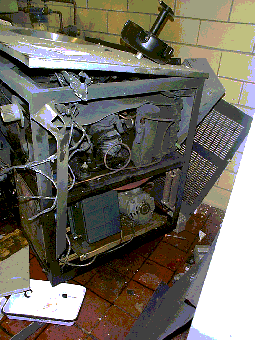Understanding the Risks of Centrifuges in Biology Labs
Written on
Chapter 1: Introduction to Laboratory Equipment
Laboratories, particularly in biology, can seem intimidating due to their array of machinery. While many might picture sleek, futuristic facilities, the reality is often a cluttered workspace filled with lab benches, shelves overflowing with various materials, and an assortment of tools and equipment.

Among the many tools in a biology lab, some devices pose significant risks. My experience working in “wet labs” made me acutely aware of these dangers, particularly one piece of equipment that haunted my early days in the lab.
Section 1.1: The Centrifuge: A Closer Look
When thinking of laboratory equipment, many might not associate a centrifuge with danger. However, this device, which spins samples at high speeds, can be quite fearsome.
For those unfamiliar, a centrifuge operates like a merry-go-round, using centrifugal force to separate components based on their density.

The smaller models can reach around 2,500 xg (times gravity) and are relatively affordable, costing about $1,200. However, larger centrifuges can escalate dramatically in power and size, with some ultracentrifuges spinning at over 100,000 xg, even nearing 1,000,000 xg.

These machines are crucial for tasks such as separating blood components or isolating cellular materials.
Section 1.2: The Dangers of High-Speed Spinning
While incredibly useful, centrifuges come with inherent dangers. At its essence, a centrifuge comprises a motor and a rotor that spins samples. If the samples are unevenly distributed, the resulting imbalance can create extreme stress on the machine, leading to catastrophic failures.
In 1998, a Purdue University ultracentrifuge experienced such a failure while spinning at 90,000 rpm, resulting in an explosion that sent metal fragments flying across the room.

Although safety shields are in place, they can sometimes fail, as evidenced by this incident. Fortunately, there were no injuries that day, but the potential for harm is very real.
Chapter 2: Ensuring Safety When Using Centrifuges
The DOs and DON'Ts of Lab Safety (Funny) - YouTube
In this video, various lab safety practices are humorously explored, emphasizing the importance of following guidelines to prevent accidents.
Lab Techniques & Safety: Crash Course Chemistry #21 - YouTube
This educational video discusses essential lab techniques and safety measures, providing insights into maintaining a safe laboratory environment.
To mitigate the risks associated with centrifuges, it’s crucial to adhere to safety protocols. Balancing the samples meticulously—within 0.1 grams—is essential to prevent accidents. Regular inspections of rotors for any damage and ensuring that all components are rated for the stress they will endure are also vital steps.
In summary, centrifuges are powerful tools that can be dangerous if not handled with respect. By following safety measures and being aware of the risks, we can harness their capabilities while keeping ourselves safe.